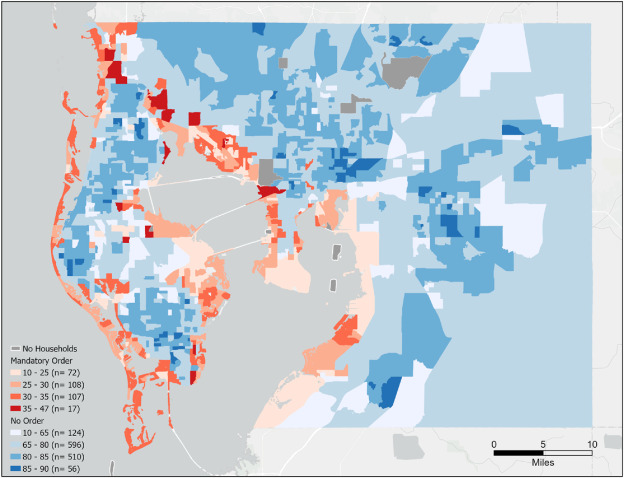
HU – Predicting hurricane evacuation for local neighborhoods across a metropolitan region
Shakawat H. Tanim, Steven Reader, Yujie Hu
Article first published online: 7 November 2023
DOI: https://doi.org/10.1016/j.ijdrr.2023.104117
ABSTRACT: To mitigate the devastating impacts of hurricanes on people’s lives, communities, and societal infrastructures, disaster management would benefit considerably from a detailed understanding of evacuation, including the socio-demographics of the populations that evacuate, or remain, down to disaggregated geographic levels such as local neighborhoods. A detailed household evacuation prediction model for local neighborhoods requires both a robust household evacuation decision model and individual household data for small geographic units. This paper utilizes a recently published statistical meta-analysis for the first requirement and then conducts a rigorous population synthesis procedure for the second. Our model produces predicted non-evacuation rates for all US Census block groups for the Tampa-St. Petersburg-Clearwater Metropolitan Statistical Area for a Hurricane Irma-like storm along with their socio-demographic and hurricane impact risk profiles. Our model predictions indicate that non-evacuation rates are likely to vary considerably, even across neighboring block groups, driven by the variability in evacuation risk profiles. Our results also demonstrate how different predictors may come to the fore in influencing non-evacuation in different block groups, and that predictors which may have an outsize impact on individual household evacuation decisions, such as Race, are not necessarily associated with the greatest differentials in non-evacuation rates when we aggregate households to block group level and above. Our research is intended to provide a framework for the design of hurricane evacuation prediction tools that could be used in disaster management.
Read the full publication in International Journal of Disaster Risk Reduction.